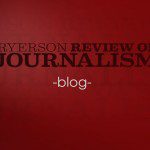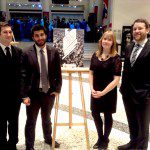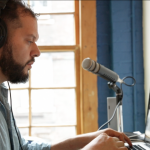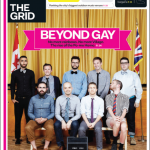January 19, 2012
Trisha Marie Fialho
The Big Bad Wolf isn’t so big and bad
“There’s a part of this book, The True Story of the Three Little Pigs, where there’s this wolf, who’s a smart aleck from Brooklyn. The wolf says, ‘There’s a little bit of a misunderstanding. I was going next door to get a cup of sugar ’cause I was making a birthday cake for my granny, and my neighbour, who’s a piggy, built his house out of straw and it made me sneeze a tremendous sneeze, and the house fell down, and the piggy died. Being a good citizen, I’m not gonna leave this pig meat out in the hot sun. Can you say trichinosis? So I ate it.’”
Dean Miller, news reporter and editor, is—in a distinct Brooklyn accent—impersonating the Big Bad Wolf of the not-so-familiar version of the “Three Little Pigs” fairytale, written by Jon Scieszka. Miller,
director of the Center for News Literacy housed at New York’s Stony Brook University, spoke to me about the program that teaches news literacy skills designed to encourage critical consumption of news. He uses this story in the undergraduate class he teaches, saying that when he reads it, he can see the lights go on for his students. “And the facts are terrific,” Miller says. “I ask them, ‘How big is a wolf, the Big Bad Wolf?’ Well, an average North American wolf is about 75 pounds. And a pig? Well, they’re friggin’ enormous. They’re like 500 pounds. And they’re really nasty and territorial. They’re much more dangerous than a wolf.” The moral of the story: “You’ve been taught your whole life that wolves are big and bad, but you never got the other side of the story. In fact, it could be a lot more complicated.”

The Center for News Literacy is the first of its kind, and although its model (or a variant of it) has been implemented in roughly 20 post secondary institutions—as well as in elementary and high schools across the United States and in countries including Australia, Turkey, and Puerto Rico—it has yet to make its way here, a fact that I, as a Canadian journalism student, find unfortunate. When I was in high school, the closest we got to news literacy was media studies, which focused more on sexism in music videos than anything news related.
Jordan Press, who holds a journalism degree and a master’s in education, wrote his thesis on what journalists and educators believe should be part of a news literacy curriculum. His aim, he says, is to be the bridge that the three groups—journalists, academics, and educators—can all walk across to help develop a news literacy curriculum. But there’s been much debate about intentions, Press says, noting that academic journals often argue that journalists only want to glorify their profession.
Press adapted the Stony Brook news literacy model to meet a Canadian context. He pitched it at a few colleges, but didn’t get far. Maybe he didn’t pursue it enough, he says, adding that if he gets the opportunity, he’ll keep pushing it. Still, he thinks the idea of news literacy in the Canadian classroom is catching on. “But it’s just not as explicit as it is in the States, or maybe as it should be here.” Press makes clear his bias as a journalist, but says that if the American experience is any indication, it would be an excellent step.
I couldn’t agree more.
Lead image by Wasim Ahmad, Stony Brook University School of Journalism.















